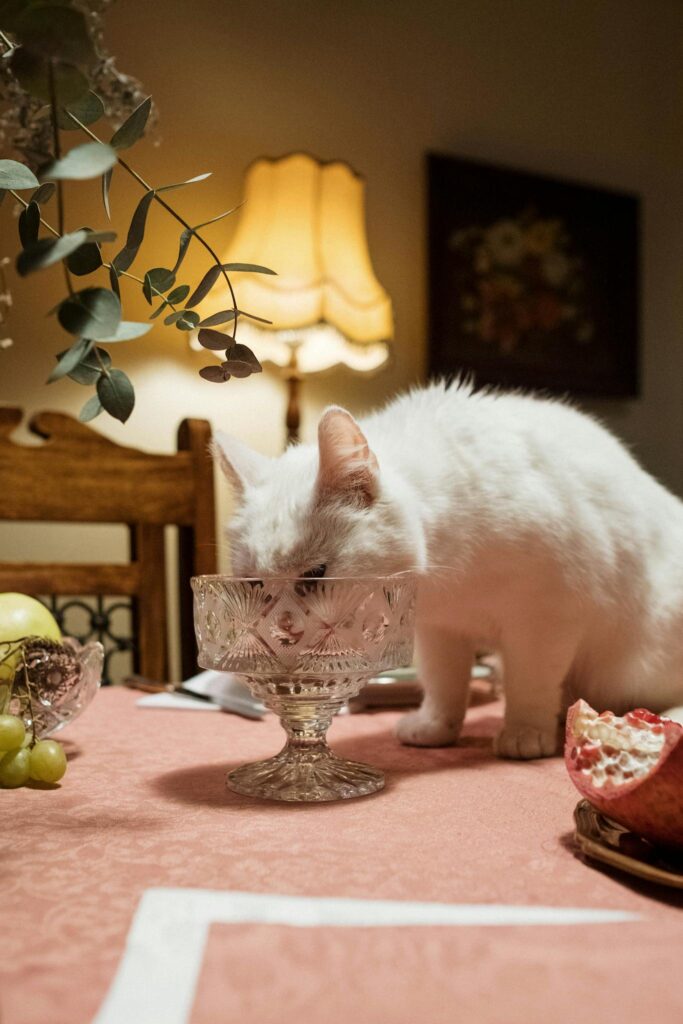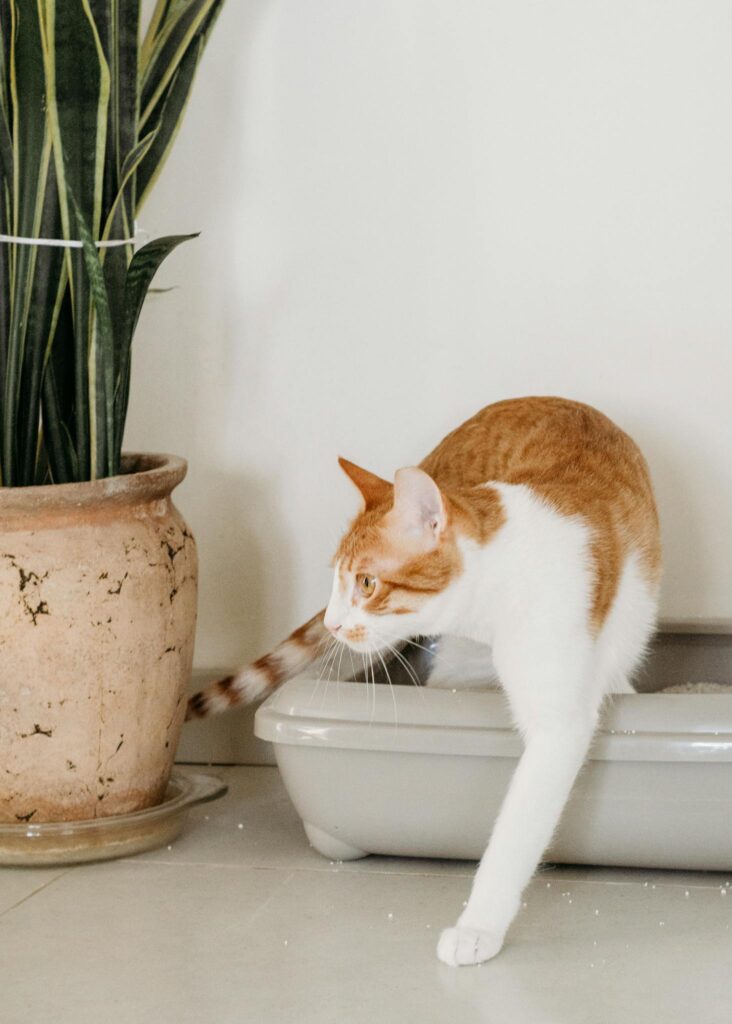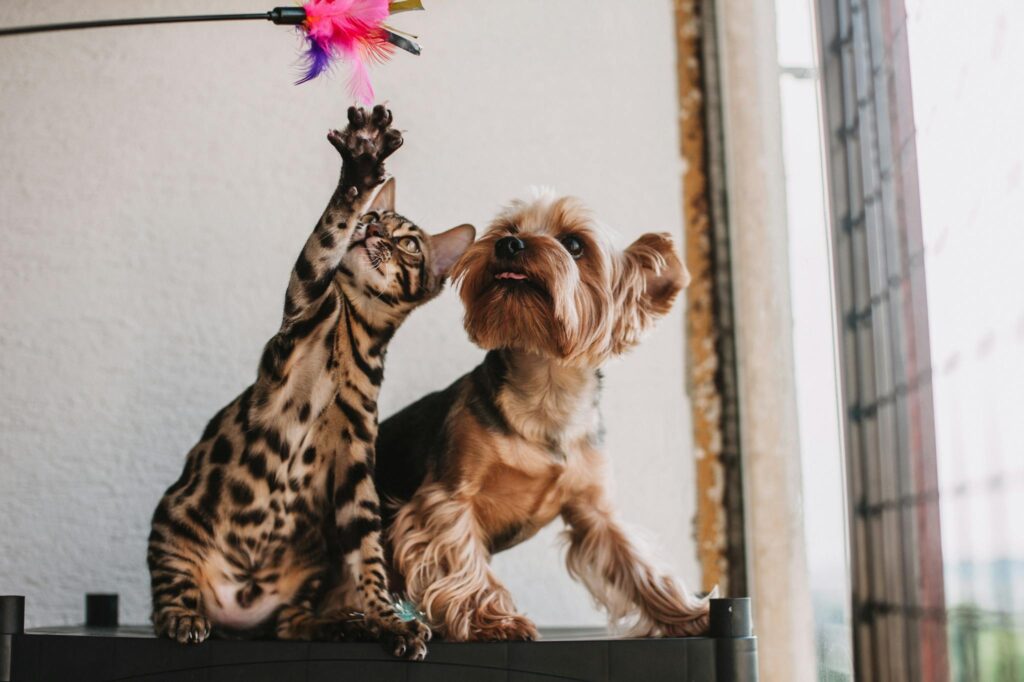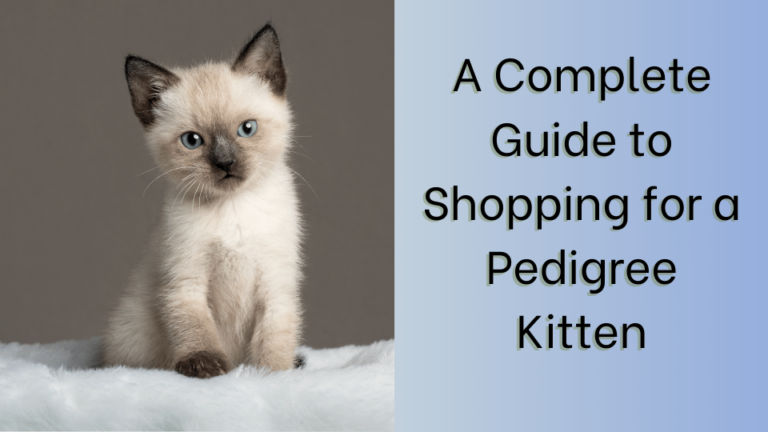Your First Week with A New Kitten: What to Expect
So, you’ve just brought home your new family pet! Congratulations! Here’s what you can expect in your first week with a new kitten.
Whether you’ve been eagerly anticipating this moment for weeks or decided on a whim to welcome a little fury friend into your life, you’re in for an adventure. But if you’re a first-time kitten owner, you might be wondering, “What now?” Don’t worry, we’ve got you covered.
Here’s a handy guide on what to expect during your first week with your new kitten.
Eating Habits
Your kitten’s tummy is tiny, so they’ll need to eat small, frequent meals. At 12 weeks old, they should be eating about 3-4 times a day. It’s important to provide high-quality kitten food because they need extra nutrients to grow strong and healthy.
You might notice that your kitten is a bit hesitant to eat at first. That’s normal! They’re adjusting to their new environment. To help, try feeding them in a quiet, safe space away from the hustle and bustle of the house.
How Much to Feed: Generally, a kitten this age will need about 1/4 to 1/2 cup of food per day, split into several meals. However, this can vary depending on the brand and type of food, so always check the feeding guidelines on the package.
Choosing Quality Food: Look for a kitten-specific formula. Kittens need more protein and fat than adult cats to support their rapid growth and development. Here are some tips for picking out high-quality kitten food:
- Ingredients: The first ingredient should be a high-quality protein source like chicken, turkey, or fish. Avoid foods with fillers like corn, wheat, or soy. We often suggest brands like Purina, Wellness, Nulo and Tiki Cat.
- Nutrients: Ensure the food contains essential nutrients such as taurine, DHA (an omega-3 fatty acid important for brain development), and balanced vitamins and minerals.
- Brand Reputation: Stick with reputable brands known for their quality control and nutritional research.
- Wet vs. Dry: Wet food can be beneficial because it helps with hydration and is usually more palatable. Dry food is convenient and can help with dental health. A mix of both can be a good approach.

Litter Box Expectations from Your Kitten
Ah, the litter box. It’s one of the first things your kitten will need to get familiar with. Thankfully, kittens have a natural instinct to bury their waste, so litter training is usually pretty straightforward.
Make sure the litter box is easily accessible and not too far from where your kitten spends most of their time. Keep it clean, and if your kitten has an accident, gently place them in the litter box to remind them where they should go.
- Type of Litter Box: Start with a simple, shallow, open litter box. Kittens are tiny and may struggle with high sides. As they grow, you can transition to a larger box or even a covered one if you prefer.
- Litter Types: There are various types of litter, but for best odor control and ease of use, clumping litter is often the most popular. It makes it easy to scoop out waste, keeping the box clean and odor-free. Unscented litter is usually a good choice as some cats can be sensitive to strong fragrances. There are also many other types of litter on the market these days. Pine pellets are a good choice if you prefer a clumping itter alternative. Its dust free, controls odor well and is easy to maintain.
- Scooping: Scoop the litter box at least once a day. This helps keep the box clean and inviting for your kitten. Regular scooping also helps prevent any unpleasant odors from building up.
- Location of the Box: Place the litter box in a quiet, easily accessible location. Avoid high-traffic areas or places with loud appliances that might scare your kitten. A bathroom or a quiet corner of a room can be ideal.
- Number of Boxes: The general rule of thumb is to have one more litter box than the number of cats. So, for one kitten, two boxes are recommended. This ensures that your kitten always has a clean place to go, even if one box is temporarily dirty. Some cats prefer one box for pee and one box for poop.
- Cleaning the Box: In addition to daily scooping, give the litter box a thorough cleaning once a week. Dump out all the old litter, wash the box with mild soap and water (avoid harsh chemicals), and refill with fresh litter. This keeps the box hygienic and pleasant for your kitten.

Blending into the Family
During your first week will likely be a bit shy and nervous at first. Imagine being plucked from everything you’ve ever known and dropped into a completely new world. Give them some time and space to explore and get comfortable. It’s a good idea to start them off in a smaller, kitten-proofed room before gradually giving them more freedom. Spend lots of time with them, talking gently and offering pets and treats to help them feel safe and loved.
Step-by-Step Guide for Introducing Kittens to Other Pets
- Separate Spaces: Start by keeping your new kitten in a separate room. This allows them to get used to the smells and sounds of the house without being overwhelmed by other pets. It also gives your existing pets time to adjust to the new scent of the kitten.
- Scent Swapping: Before any face-to-face introductions, start by swapping bedding or using a cloth to rub each pet, then allowing the other pet to sniff it. This helps them become familiar with each other’s scent in a non-threatening way.
- Controlled Meetings: After a few days of scent swapping, you can begin with controlled meetings. Use a baby gate or keep your kitten in a carrier so they can see each other without direct contact. Keep these sessions short and positive, offering treats to both pets to create a positive association.
- Gradual Increase of Interaction: As both pets become more comfortable, you can gradually increase the length of their interactions. Always supervise these meetings to ensure they remain calm. If there are any signs of aggression or stress, separate them and try again later.
- Positive Reinforcement: Use treats, praise, and gentle petting to reinforce good behavior. Reward both your kitten and your existing pets for staying calm and curious rather than aggressive or fearful.
- Safe Spaces: Ensure that each pet has their own safe space to retreat to if they feel overwhelmed. This could be a separate room, a high perch for the cat, or a comfy bed for your dog.
Specific Tips for Different Types of Pets
- Other Cats: Cats are territorial, so introductions can take time. Be patient and let them work out their own hierarchy. Some hissing and swatting is normal as they establish boundaries.
- Dogs: Ensure your dog is calm and under control during introductions. Keep your dog on a leash at first and teach them to remain calm around the kitten. Gradually increase their time together, always under supervision.
- Small Animals: If you have small pets like rabbits or hamsters, be extra cautious. Ensure that your kitten cannot access their enclosures. Introduce the kitten to these pets from a distance and never leave them unsupervised together.

Signs to Watch For From Your Kitten
- Positive Signs: Curious sniffing, gentle body language, relaxed posture, and playful behavior.
- Negative Signs: Hissing, growling, raised fur, swatting, excessive barking, or aggressive chasing. If you notice these signs, separate the pets and try again later.
Patience is Key
Remember, patience is crucial during first week with a new kitten. Some pets may become best friends quickly, while others may take weeks or even months to fully accept each other. Go at a pace that is comfortable for all your pets, and never force interactions.
By following these steps, you’ll help your new kitten and existing pets build a positive relationship, setting the stage for a harmonious multi-pet household.
Meeting Other Pets
If you have other pets at home, introductions need to be done slowly and carefully. Keep your new kitten separated at first and let them get used to the scents and sounds of their new housemates. Swap bedding between the pets so they can start to get familiar with each other’s smell. When it’s time for a face-to-face meeting, keep it short and supervised. Be patient; it can take some time for everyone to adjust.
Rambunctious Behavior
Kittens are like little balls of energy. They’ll zoom around the house, pounce on invisible prey, and get into everything. This is normal and a good sign that they’re healthy and happy. Provide plenty of toys to keep them entertained and to help burn off some of that energy. Interactive toys, like feather wands or laser pointers, are great for playtime and bonding.
Kittens are curious, playful, and sometimes downright mischievous. As they explore their new world, they can get into all sorts of antics. Here are some common mischievous behaviors to watch out for and tips on how to kitten-proof your home:
Climbing Everything
Kittens love to climb. They might scale your curtains, bookshelves, or even your pants leg! This can be adorable, but also potentially dangerous if they get stuck or knock things over.
- Tip: Provide plenty of climbing alternatives like cat trees and shelves specifically designed for cats. Secure loose items that could fall and hurt them.
Chewing on Wires
Those dangling cords look like the perfect toy to a playful kitten. Unfortunately, chewing on electrical wires can be very dangerous.
- Tip: Use cord protectors or hide wires behind furniture. Provide safe chew toys to redirect their attention.
Knocking Over Items
Kittens often love to bat at objects with their paws, which can lead to knocked-over vases, picture frames, and other breakables.
- Tip: Keep fragile items out of reach. Consider using double-sided tape on surfaces where your kitten likes to jump to deter them from these areas.
Playing with Human Food
Kittens are curious about your food and might jump up on counters or tables to investigate. Not only can this be annoying, but it can also be dangerous if they ingest something harmful.
- Tip: Keep food covered and put away. Train your kitten early on that counters and tables are off-limits.
Hiding in Small Spaces
Kittens can squeeze into the tiniest of spaces—behind appliances, under furniture, or even inside boxes and bags.
- Tip: Block off any dangerous hiding spots and always check for your kitten before closing doors, drawers, or cupboards.
Digging in Plants
Houseplants can become a new plaything or even a snack for a curious kitten. Some plants, however, are toxic to cats.
- Tip: Ensure all houseplants are non-toxic. Consider using hanging planters or placing plants on high shelves out of reach.
Tearing Up Paper and Fabric
Whether it’s your toilet paper roll, important documents, or a favorite sweater, kittens love to dig their claws into paper and fabric.
- Tip: Keep important items and clothing out of reach. Provide scratching posts and toys made of different materials to satisfy their need to scratch and tear.
Kittens Will Dig in the Trash
Kittens might knock over trash cans to rummage through their contents, making a mess and potentially ingesting harmful items.
- Tip: Use trash cans with secure lids and keep them in a place that’s difficult for your kitten to access.
Tasting Houseplants
Many kittens find houseplants irresistible, either for chewing or digging in the soil. Unfortunately, some common houseplants are toxic to cats.
- Tip: Research and remove any toxic plants from your home. Cat-friendly plants like catnip or wheatgrass can be a safe alternative.
Unrolling Toilet Paper
One of the classic kitten mischiefs is unrolling an entire toilet paper roll and shredding it to bits.
- Tip: Keep bathroom doors closed or place the toilet paper roll in a holder that makes it harder for your kitten to unroll it.
By understanding and anticipating these mischievous behaviors, you can take steps to create a safe and engaging environment for your new kitten. A combination of kitten-proofing your home and providing plenty of toys and activities will help keep your curious furball entertained and out of trouble. Happy kitten parenting!
Other Things to Expect During Your First Week with a New Kitten
- Sleeping: Kittens sleep a lot—up to 18 hours a day! Don’t be alarmed if your kitten spends a lot of time napping.
- Cuddles and Affection: Some kittens are super cuddly, while others are more independent. Respect their personality and let them come to you for affection.
- Vet Visits: Schedule a vet appointment within the first week to make sure your kitten is healthy and up to date on vaccinations.
Your first week with a new kitten is all about getting to know each other and helping them feel at home. It can be a whirlwind of excitement and a bit of chaos, but it’s the beginning of a beautiful friendship. Enjoy every moment, even the crazy ones, because they grow up faster than you’d think!
Welcome to the wonderful world of being a cat parent! Got any questions or funny stories from your first week? Share them in the comments below!



